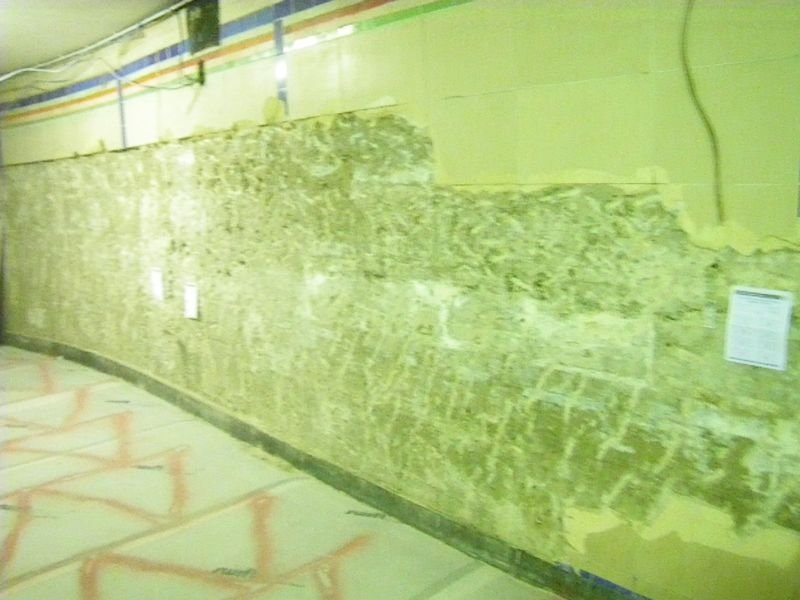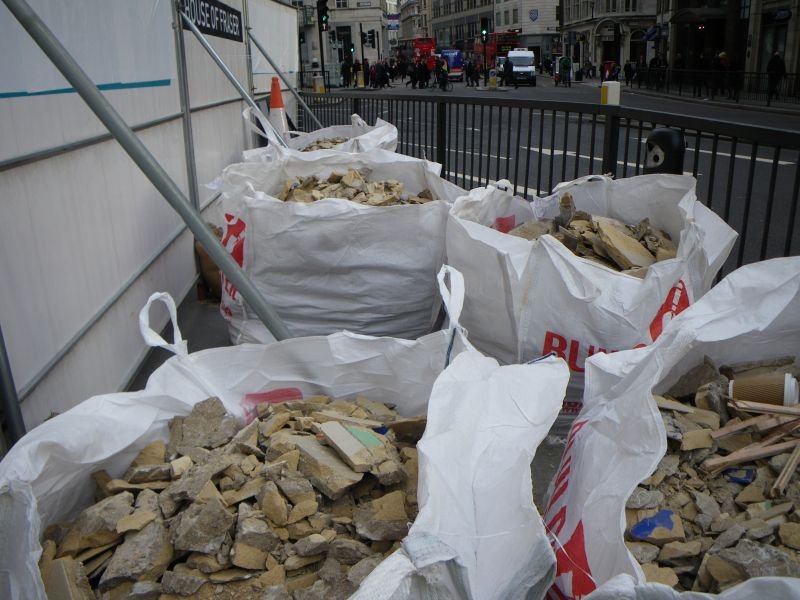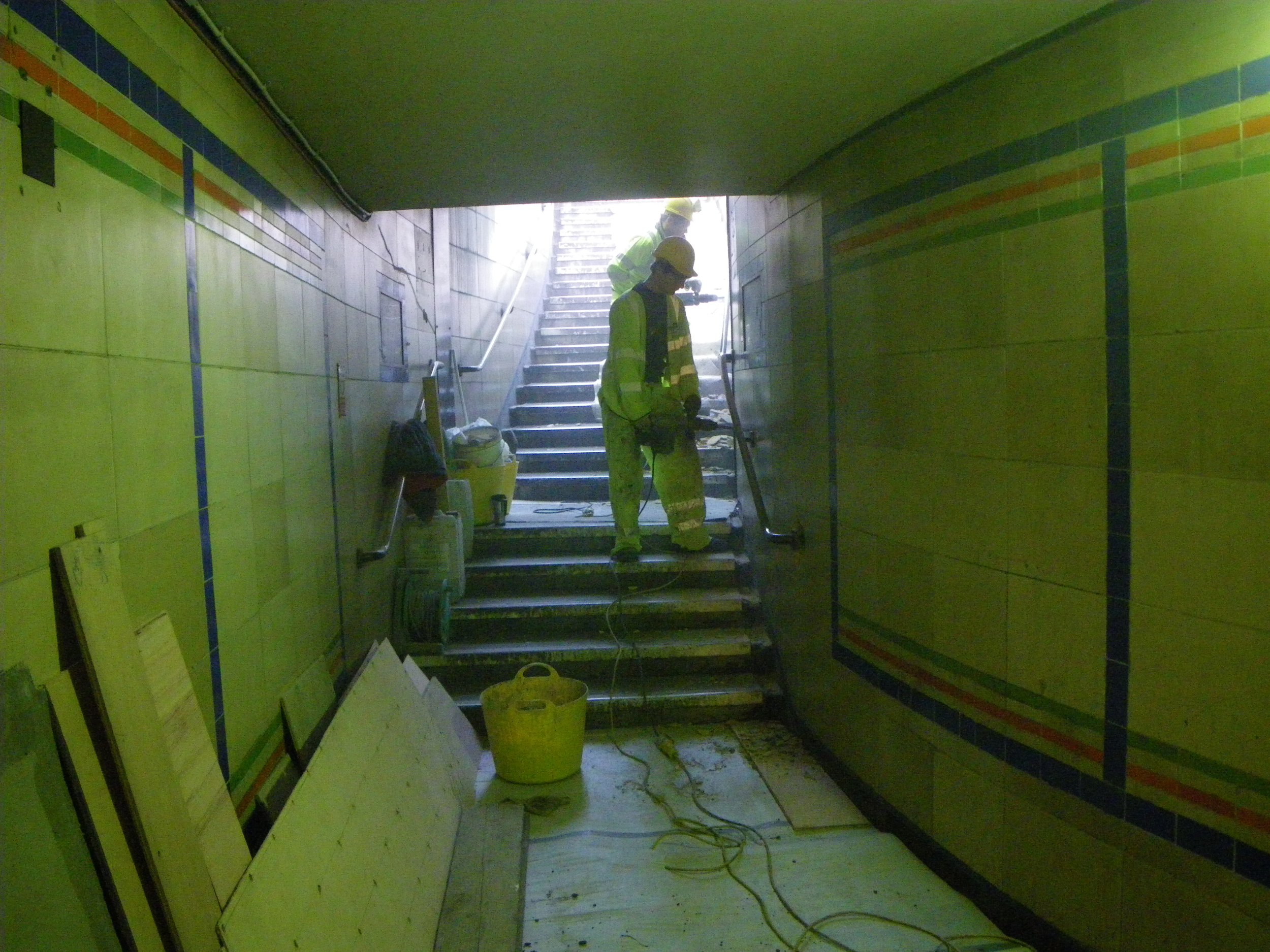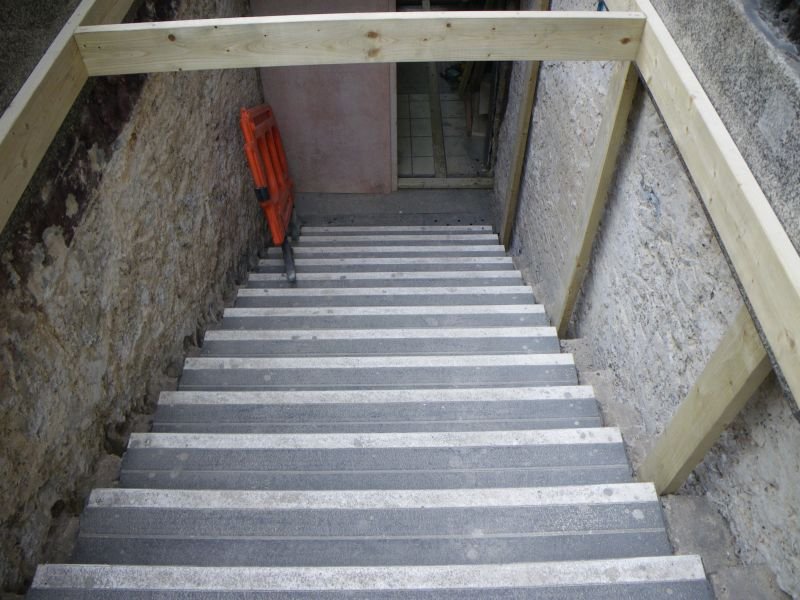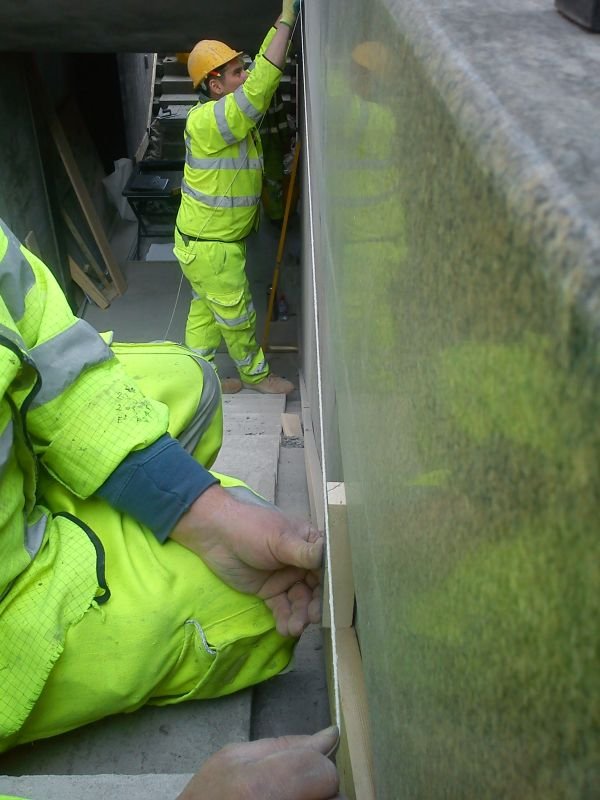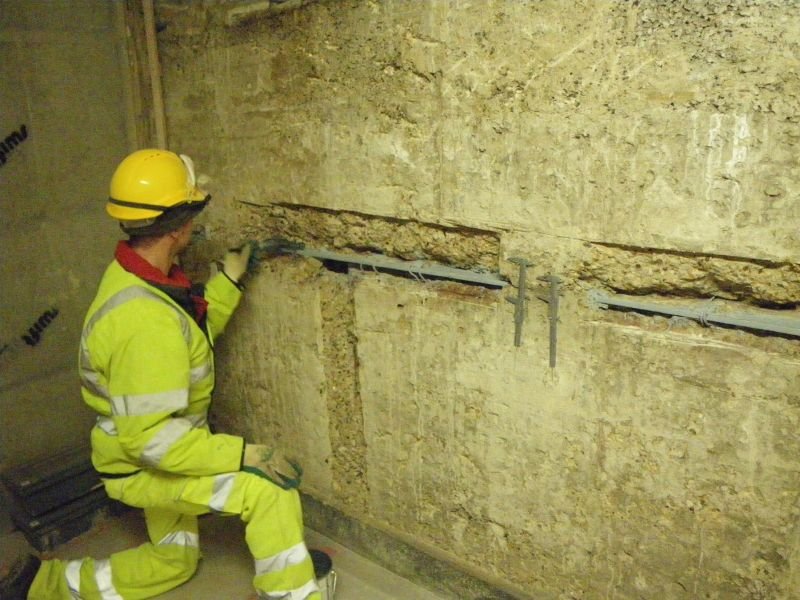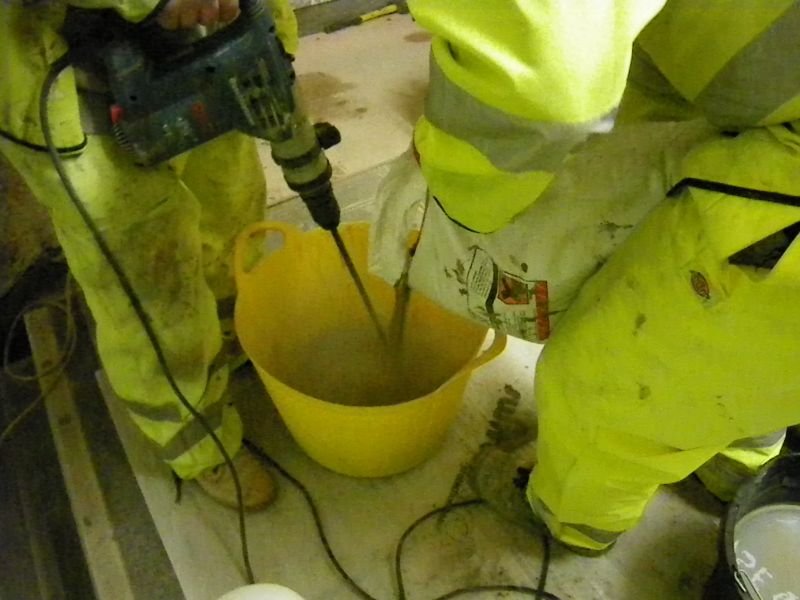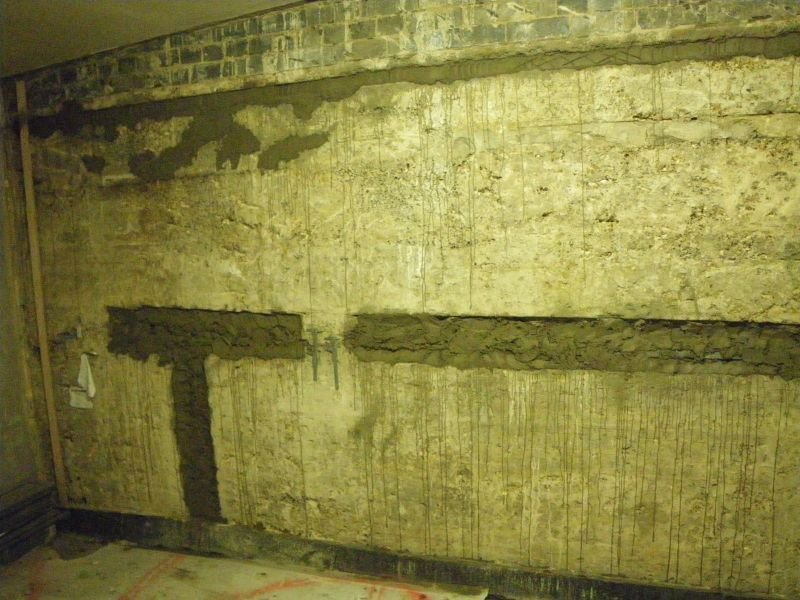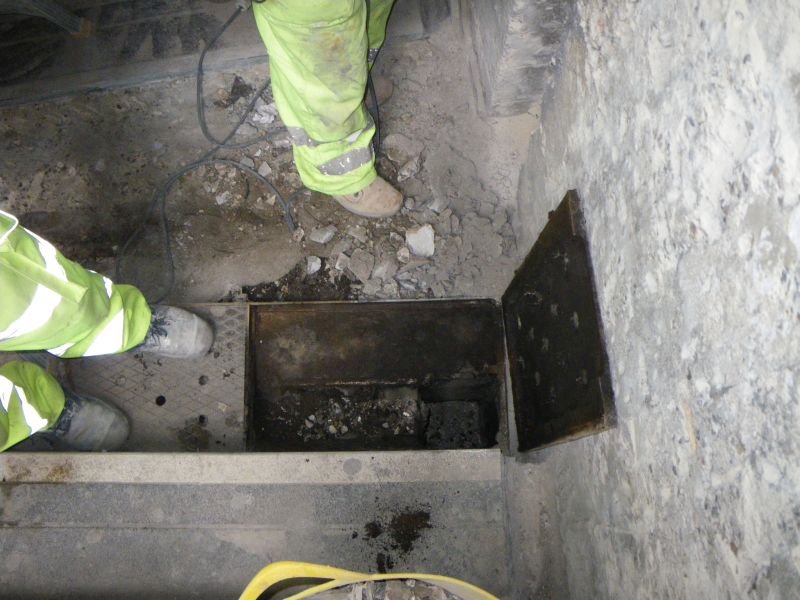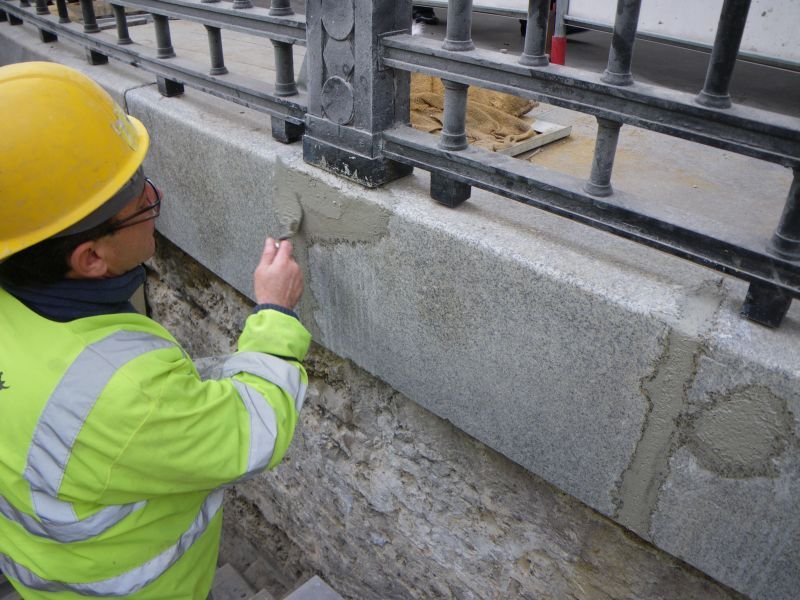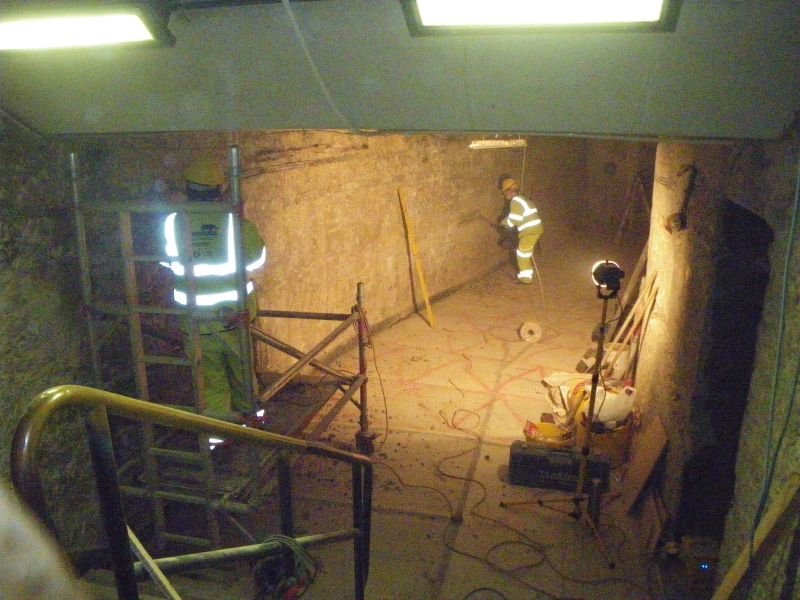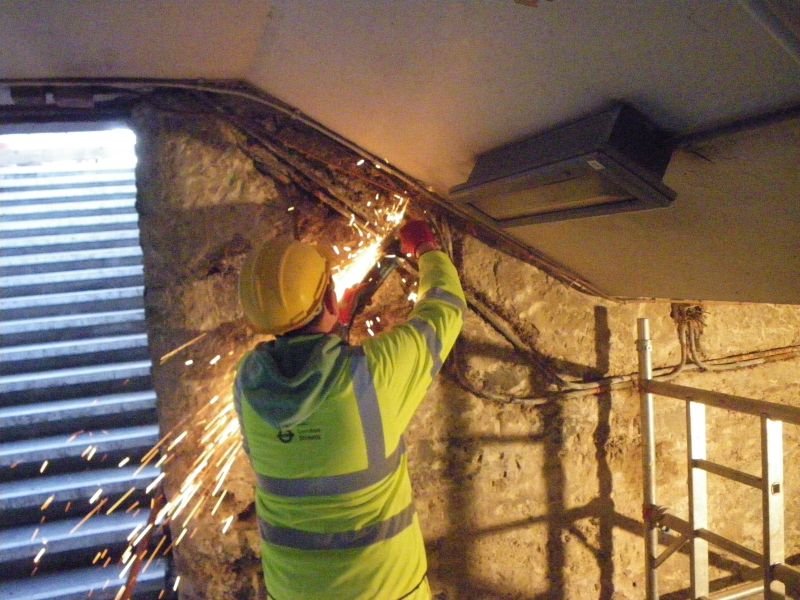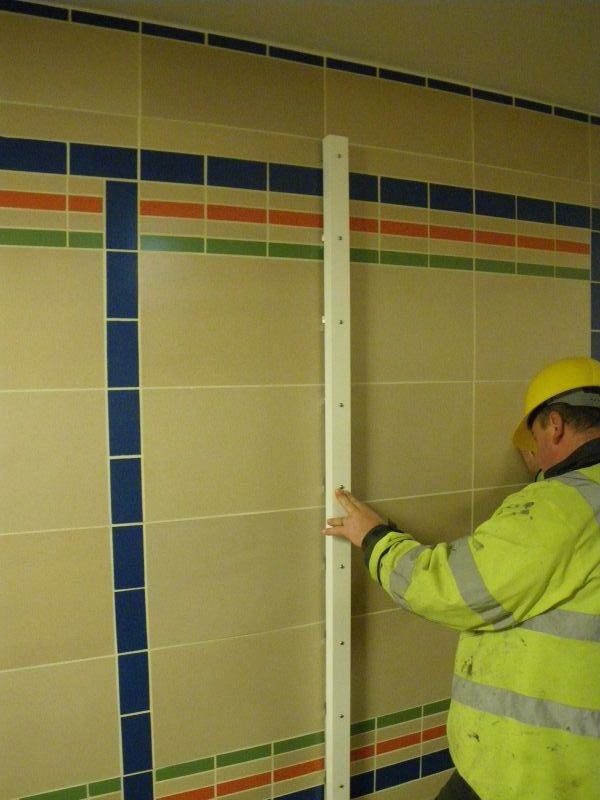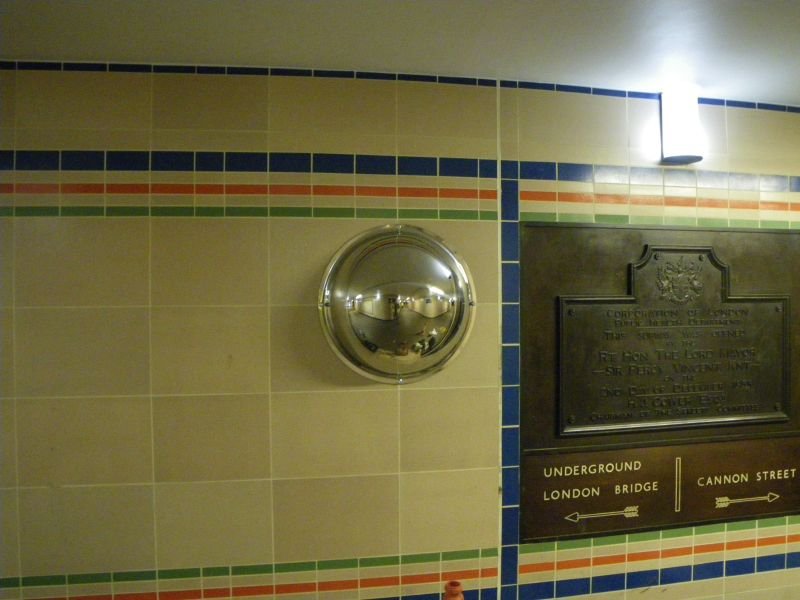Monument Subways
Rhinoceros completed the first phase of a £1million contract to refurbish the pedestrian subways at Monument Underground station. The subways were built in 1935-6 using faience tiles (glazed earthenware), with period bronze signage and handrails, and granite surrounds at street level. All of these features are being refurbished or replaced (new tiles are being specially made by the original manufaturer who is still in business). New reinforced concrete plinths are being installed at two pedestrian exits, one of which was badly damaged by a bus last year: the new plinth is designed to withstand future vehicle impacts.
Phase 1 included demolition and removal of old tiles, and removal of fittings, followed by concrete repairs and stainless steel mesh (EML) reinforced rendering of all walls in preparation for re-tiling Eml mesh was secured using Reiner Fixings. The complex topography of the station's entrances, leading to 5 street exits at different levels, and the requirement for exact measurements to accomodate the bespoke measured tiles, meant that rendering had to be within very tight tolerances.
In the meantime, demolition had to be completed while maintaining passenger access through the subways, and old tiles had to be removed with care to avoid damage to Fletton brickwork beneath them. The subways are suspended above the District line tracks and west bound platfroms at Monument station. Fosroc Renderoc GP and ST05 were used to fill concrete surface imperfections and provide a key for the Ardex X77 adhesive to be applied during the next phase of re-tiling.
Removal of old tiling had to be carried out with care to avoid damage to old brickwork
Highly complex surfaces had to be prepared with precision as all tiles are being made to order by the manufacturer of the original 1930's faience tiles
Completed rendering on one of the stations 5 street exits being refurbished, in addition to the connecting subway network
The final straw that brought the refurbishment of the pedestrian subway system at Monument tube station to the front of the queue. A double-decker demolished granite plinths at one of the street exits. But the system had been overdue a major refurbishment and RHINOCEROS were contracted to bring restore it to its original Art Deco glory. Our teams took care to make sure the details were all just right:
Named after a memorial to the Great Fire of London, it’s sibling station blown open by a direct hit in the Blitz, partly demolished by a bus in 2010, and suffering the wear and tear of 72 million passengers a year: London’s 8th busiest tube station is deserving of its current refit. With due respect to its bulldog survival spirit, the refurbishment is underpinned by new strength.
RHINOCEROS were commissioned by TfL and the Corporation of London last year to bring the pedestrian subways back to their former glory. Far from a simple cosmetic job, the work has combined unobtrusive but traffic-proof strengthening with meticulous replacement of original period features. The project is now complete and all areas are reopened to the public, the detail of its fittings recalling the golden age of the tube.
Monument tube station was originally opened in 1884, then linked to Bank station in 1933. Its pedestrian subways carry both passengers and an additional high volume of foot traffic under the busy road junction of King William Street, Gracechurch and Cannon Streets with Eastcheap. They were installed in 1935-6 using faience (glazed earthenware) tiles, with period bronze signage and handrails, and granite surrounds at street level. The subways are suspended above the District line tracks and westbound platforms at Monument station.
WORK IN PROGRESS: 77-year old faience (glazed earthenware) tiles had survived remarkably well given their challenging environment, but were discoloured and alarmingly cracked. RHINOCEROS have replaced them throughout, after remarkably sourcing them back their original manufacturer who faithfully reproduced them in original colours and using little-changed techniques. The tortuous topography of the subways (emerging at five different street levels) required painstaking and meticulous planning to ensure that straight lines and wall curves were followed. Tiling could only be started after careful demolition of rendering beneath the old tiles, some of it only supported by fragile single-skin 1930‘s fletton brickwork.
THE FINISHED PRODUCT - HERITAGE WITH STRENGTH: Most challenging was the restoration of granite plinths supporting cast-iron parapets at street level. One of the plinths had suffered two head-on collisions from double-decker buses, the most recent in 2010 while this project was in the planning phase. The granite plinth had already been destroyed by the first collision. This second accident destroyed the original parapets. A high strength re-inforced concrete beam was cast in formwork constructed by Rhinoceros joiners, that resembled the ribs of a Viking longship. New parapets cast from moulds based on the original castings were then installed to provide a higher degree of impact resistance while faithfully retaining the heritage design from the 1930s - Heritage with Strength.
PERIOD DETAILS LOVINGLY RESTORED: As usual in London, all work had to be completed while maintaining passenger access through the subways. One who called it a miracle might have been exaggerating (perhaps he said it was a bloody miracle he could still get to the trains) but the Monument has a history of supernatural events: the Daily Journal of 16 September 1732 reported: "Yesterday, about 5 o'clock in the evening, notwithstanding the wind was so high, a sailor flew from the top of the Monument to the Upper Three Tuns tavern in Gracechurch Street, which he did in less than half a minute; there was a numerous crowd of spectators to see him. He came down within 20 feet of the place where the rope was fixed, and then flung himself off; and offered, if the gentlemen would make him a handsome collection, he would go up and fly down again."
The full reopening of the subways was accomplished on 17 July, in time to contribute to the many improvements made to Londons infrastructure for the Olympics.
Materials:
(Materials used include a range of concrete repair materials and high strength renders from Fosroc. Fixings by Reiner, Tile adhesive and grouts from Ardex, Lighting by Holophane, Stainless Steel conduit from lasnek, cables from Anixer. Tiles from Shaws of Darwen. Specialist sub-contractors Cast Iron Welding Services for parapets, F W Hall Ltd for handrails and Rupert Harris Ltd for restoration of bronze signage. B & T Asphalt for gullies and drainage channels.)



